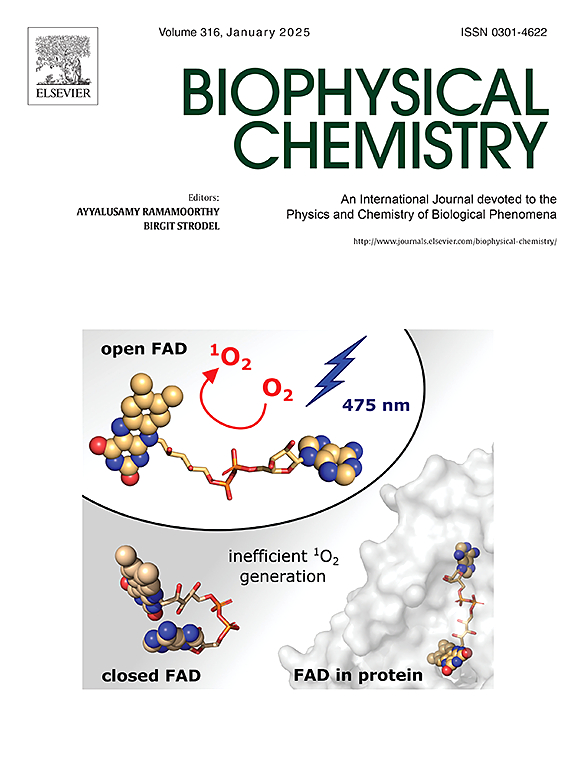从马尔可夫到非马尔可夫:推进离子通道速率过程理论
IF 2.2
3区 生物学
Q2 BIOCHEMISTRY & MOLECULAR BIOLOGY
引用次数: 0
摘要
离子通道是控制离子流动和细胞电活动的重要膜蛋白。虽然传统的马尔可夫模型提供了通道门控的见解,但它们无法捕捉到真实离子通道行为的记忆依赖动力学。本文提出了一种新的半非马尔可夫框架来理解离子通道门控过程。利用二态和三态系统的连续时间和离散状态空间模型,导出了控制通道动力学的Volterra卷积型积分方程。通过拉普拉斯变换分析,我们揭示了开闭率之间的渐近行为和先前隐藏的不对称性。我们的方法成功地预测了不对称门控动力学,表征了无限状态过程,并阐明了超越传统马尔可夫模型的动态状态创造能力。这一突破从现象学描述转向理解离子通道门控的基本物理,对针对离子通道功能障碍的药物发现和治疗开发具有重要意义。这项工作建立了离子通道研究的新范式,为解开这些关键细胞过程的全部复杂性提供了所需的数学框架。本文章由计算机程序翻译,如有差异,请以英文原文为准。

From Markovian to Non-Markovian: Advancing ion channel rate process theory
Ion channels are essential membrane proteins that control ionic flow and cellular electrical activity. While traditional Markovian models have provided insights into channel gating, they fail to capture the memory-dependent dynamics of real ion channel behavior. This manuscript presents a novel semi non-Markovian framework for understanding ion channel gating processes. Using continuous time and discrete state space models for two and three-state systems, we derive Volterra convolution-type integral equations governing channel dynamics. Through Laplace transform analysis, we reveal asymptotic behaviors and previously hidden asymmetries between opening and closing rates. Our approach successfully predicts asymmetrical gating kinetics, characterizes infinite-state processes, and elucidates dynamic state creation—capabilities beyond conventional Markovian models. This breakthrough moves from phenomenological descriptions toward understanding the fundamental physics of ion channel gating, with significant implications for drug discovery and therapeutic development targeting ion channel dysfunction. This work establishes a new paradigm in ion channel research, providing the mathematical framework needed to unlock the full complexity of these critical cellular processes.
求助全文
通过发布文献求助,成功后即可免费获取论文全文。
去求助
来源期刊

Biophysical chemistry
生物-生化与分子生物学
CiteScore
6.10
自引率
10.50%
发文量
121
审稿时长
20 days
期刊介绍:
Biophysical Chemistry publishes original work and reviews in the areas of chemistry and physics directly impacting biological phenomena. Quantitative analysis of the properties of biological macromolecules, biologically active molecules, macromolecular assemblies and cell components in terms of kinetics, thermodynamics, spatio-temporal organization, NMR and X-ray structural biology, as well as single-molecule detection represent a major focus of the journal. Theoretical and computational treatments of biomacromolecular systems, macromolecular interactions, regulatory control and systems biology are also of interest to the journal.
 求助内容:
求助内容: 应助结果提醒方式:
应助结果提醒方式:


